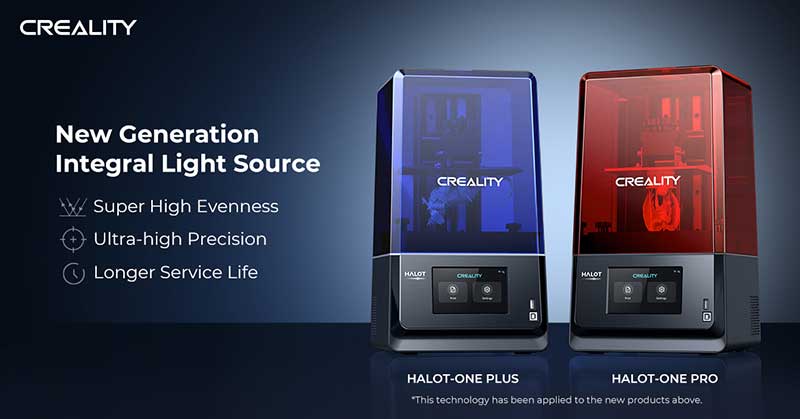
SPONSORED NEWS – As many 3D printer experts know, most resin 3D printers are designed to use Parallel Emission technology. However, some feedback reflects that joints in models receive less lighting intensity which results in uneven printing. Broken LED units also negatively influence the model’s precision making it challenging for users to make perfect prints.
To solve this problem and optimize the user experience, the R&D team of Creality has delved into research to come up with a technological breakthrough. This year, Creality successfully released new resin 3D printers, which have adopted the new generation Integral Light Source technology. Featuring stronger lighting intensity, remarkable lighting evenness, and ultra-high printing precision, new generation Integral Light Source technology is developed to be impressive.

Why Integral Light Source?
Lighting Evenness
Parallel Emission is a technology commonly used in resin 3D printers which uses a UV LED matrix and LED units. Therefore, if there are broken LEDs, the printed model will be affected by the uneven lighting. Furthermore, the light intensity at the joints is not so consistent with other areas of the model, which will also influence the resulting print.
Different from Parallel Emission, the new generation Integral Light Source is based on the reflection and refraction working principles. Five LED units with four emission chips for each LED unit ensure 90% and above evenness with 6000uw/cm² lighting intensity. It doesn’t even matter if an LED unit is broken, providing a more stable printing condition for users.
According to the testing statistics, the lighting evenness of the new generation Integral Light Source can reach up to 93.5%, while the Parallel Emission is only 51.1%. Such remarkable evenness is quite reliable to print precision models with great glossiness.
Lighting Evenness Differences (Visual Comparison)
| Parallel Emission | Integral Light Source |
|
AVE: 7496 |
AVE: 3769 MAX: 3869 MIN: 3618 Accuracy: 93.5% |
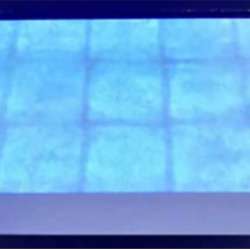 |
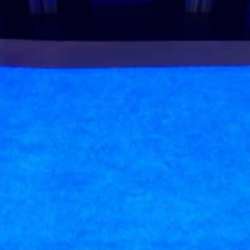 |
Accuracy
Resin 3D printers powered by the new generation Integral Light Source technology vastly improve the printing accuracy. Take the following T0 model as an example. To print a 60 x 60 mm model, the one printed with Integral Light Source Technology turns out to be 59.91 x 59.93 mm with the accuracy reaching 99.73%, more accurate than the one printed with Parallel Emission Technology.
| Parallel Emission Printing Technology | Integral Light Source Printing Technology |
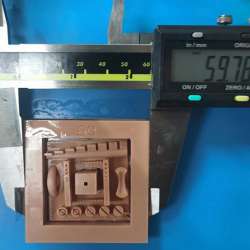 |
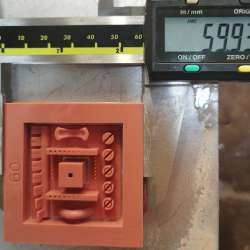 |
| Target Print Size 60 x 60 mm | Target Print Size 60 x 60 mm |
| Actual Print Size 59.78 x 59.78 mm | Actual Print Size 59.91 x 59.93 mm |
| Accuracy: 99.27% | Accuracy: 99.73% |
The new generation Integral Light Source technology has been applied to the Creality HALOT ONE series, including HALOT ONE, HALOT ONE PRO, and HALOT ONE PLUS. Let’s take a close look at the HALOT-ONE PLUS. As a new resin 3D printer launched in 2022, the HALOT-ONE PLUS will impress users with its high precision, intelligence, and ease of use. Its 7.9” 4K Mono LCD enables anime enthusiasts to print their favorite cartoon characters, tools, etc. Even micro-pores and micro-columns can be vividly printed, bringing imagination into reality with full details.
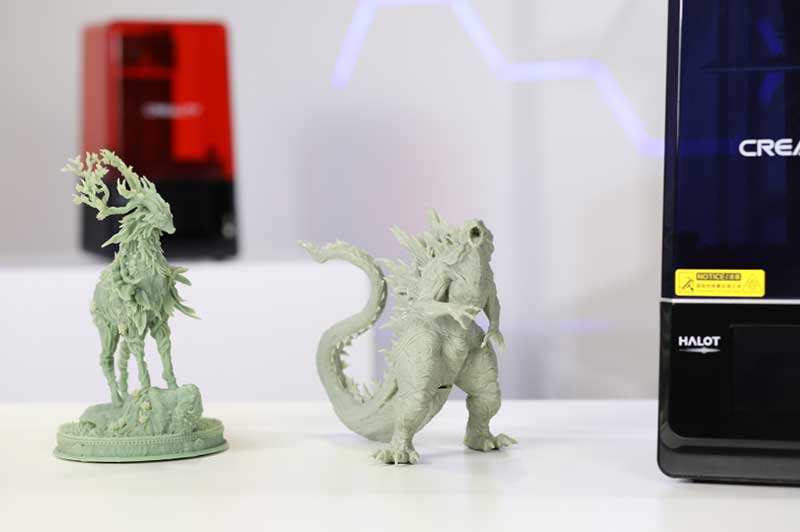
In addition to anime printing, the new generation Integral Light Source technology is favored by the jewelry industry. Up to 92% lighting evenness can perfectly print out micro-holders of 0.1-0.3 mm for models with complicated structures. High precision and enhanced speed vastly improve the 3D printing experience.

Powered by the new generation Integral Light Source technology, the HALOT-ONE series 3D resin printers will surely bring some surprises. Anyone who is interested in it, why not print something and have fun?
https://store.creality.com/products/halot-one-plus-resin-3d-printer


